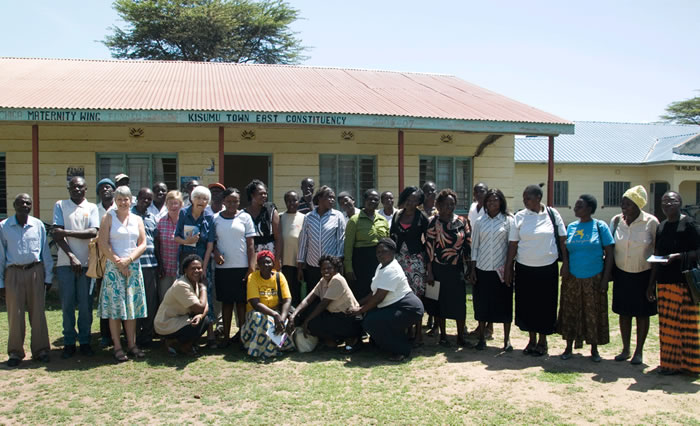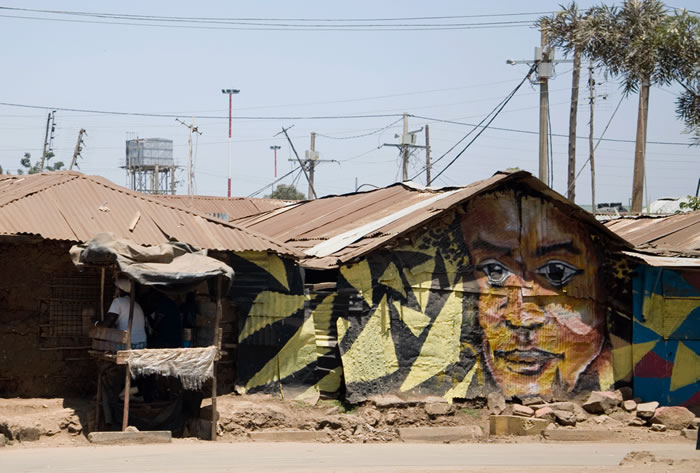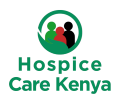Hospice Care Kenya raises funds in the UK to support the development and delivery of palliative care in Kenya. On a recent trip to Kenya two Trustees and I went to visit some of the projects we have supported. Wherever possible we visited the patients who are being supported by the dedicated individuals providing palliative care in Kenya. The, very often, individual determination to raise awareness of palliative care and find the funds and resources in order to be able to deliver this was in many cases inspirational. To see the environment and the system within which they are having to do so was humbling and did indeed bring home the message that, for those of us in the UK, we should be extremely grateful for the NHS and the charitable services hospices provide but that in other parts of the world there are many hidden patients, living hidden lives without access to the care we take for granted.
One of our priorities for funding is supporting projects to train community health workers and community health volunteers in the basics of palliative care so that they can at least identify patients who may be suffering from cancer and when they are being cared for at home, can provide the essential elements of palliative care. One such project we have funded is run by Kisumu Palliative Care and Oncology Centre and we visited a group of 25 community health volunteers who had recently completed the training. These individuals are unpaid but work up to three days a week looking after up to 150 homes each in their own community. These communities in the main are villages without power or water where the houses are built from mud bricks because the land is low-lying and floods easily. They were all worried about El-Ninio which is due in October. To reach them the roads are unmade, rutted and bumpy and virtually impassable after the rain and it took us about forty-five minutes to get there in a four wheel drive vehicle. Bad enough for us but imagine doing this journey in a public minibus when you are ill or in pain and that’s after you have been carried out from the village to the “road” on a donkey, motorbike or by relatives.

Ironically but not unusually, the first patient we visited with them had been a community health volunteer herself. Many of the volunteers will have cancer because that is how they have become aware of what cancer is and what can be done to treat it or palliate its effects. They then want to give something back and spread this knowledge to their community. She was a women with two children in their early teens but her husband had died. The family were supportive and were helping to care for her. She had Aids, TB and cervical cancer (fast becoming the most common cancer in Kenya) and had been discharged from hospital because “there was nothing the hospital could do for her so she should go home to die.” She was lying in virtual darkness in one room of the two room house and was in severe pain as she had been given no pain relief by the hospital. The community health volunteers knew she had come home, though no-one knew officially and had therefore asked the Hospice to visit. By 4pm that evening the hospice nurse had gone back to the hospice, dispensed morphine and met up with the volunteer again so that she could deliver the morphine. The hospice provides morphine free of charge (through a Hospice Care Kenya grant) because otherwise patients would have to pay.
At Thika Level 5 County Referral Hospital we are also funding the training of community health workers. However on our visit there we saw their clinic in a tent (ingeniously made from recycled banners from a past palliative care conference) and visited one of the wards. The two palliative nurses visit the wards every day to try to provide palliative care. They are not able to make home visits as they have no vehicle. The patient we saw had been discharged from Nairobi, some 40km away, to her more local hospital as she needed a blood transfusion. She was indeed very pale and clearly fatigued however the hospital were about to send her home because they had no blood. Her family had donated some themselves but this had been sent to Nairobi for screening and would not be back for some time.
At Nakuru, where the hospice does make home visits, we went out with one of the nurses. In a little enclave behind a welders making doors we found two rows of brick houses with a central drain but again no electricity or water. In her two room house we met the 30 year old single mum of two boys aged eleven and thirteen. They are her main carers as she is bedridden with an osteosarcoma of the thigh which has never been treated. She did not have the money to pay for treatment and the nearest centre for chemotherapy or radiotherapy was Nairobi a four hour trip away. She is receiving pain relief free of charge from the hospice and the community around her look in and try to provide food and the money for her rent. Indeed the hospice nurse also gave the son some money when we were there. But what of the children and their hidden needs? What effect does it have on them when the first thing they do when they come home from school is to look in on Mum to see if she is still alive and if she is, to wash and feed her.

It could be soul destroying to see this day in day out but instead the overwhelming sense is one of determination to do what they can, to give thanks for what they do achieve and to support and help each other with true community spirit.
The question to ask ourselves is, even though we have so much, do we value what we have and each other as much as these hidden patients leading hidden lives?
